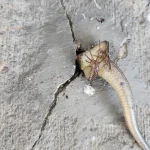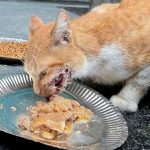The Crow and the Swarm: Nature, Survival, and the Mystery of Anting
The Crow and the Swarm: Nature, Survival, and the Mystery of Anting
In the natural world, where predator and prey follow ancient rhythms of survival, there are occasional scenes that break from the expected and capture our imagination with unsettling clarity. One such moment is captured in the image above — a crow, completely covered in a swarm of ants, standing calmly, almost stoically, as the insects crawl across its feathers, talons, and beak.
To the untrained eye, it looks like something out of a horror film — a scene of suffering, of attack, of infestation. But what if it isn’t? What if, beneath the chaos of crawling bodies, there’s a story of strategy, evolution, and mutual benefit?
This is not a random event. It’s part of an unusual but well-documented behavior known as anting. And it’s one of the most bizarre and brilliant adaptations in the avian world.
First Impressions — The Horror and the Mystery
At first glance, the image of a bird — particularly a crow, one of nature’s most intelligent animals — swarmed by ants evokes fear. We imagine agony, helplessness, and violation. We assume the bird is a victim, under attack, perhaps near death.
But look again.
The crow stands tall. Its posture is not defensive. Its expression, if birds can be said to have one, is calm, observant, alert.
Why?
Because this crow may not be a victim. It may be a willing participant.

What Is Anting?
Anting is a behavior seen in over 200 species of birds, including crows, jays, thrushes, and pigeons. It involves allowing ants to crawl over the body or actively picking them up and rubbing them into the feathers and skin.
There are two recognized types:
-
Passive anting – as seen in the image – where the bird sits or lies down near an ant colony and allows the ants to swarm its body.
-
Active anting – where birds pick up individual ants in their beaks and deliberately smear them over their feathers.
While strange to human perception, this act serves a few vital purposes in avian life.
The Purpose Behind the Madness
So, why would a bird let itself be covered in ants?
1. Pest Control
Ants, particularly formic acid-producing species, help rid birds of parasites like mites, lice, and fleas. As the ants crawl through feathers, they bite or spray formic acid, which can kill or dislodge parasites that birds can’t reach with their beaks alone.
This is biological self-care — a natural form of delousing.
2. Feather Maintenance
The formic acid excreted by ants is a natural antiseptic. By allowing ants to spray their chemical defenses, birds may be protecting their skin from infection and maintaining healthy plumage.
3. Food Preparation
Some birds use ants to pre-treat prey — particularly caterpillars and insects with irritating hairs or toxins. Rubbing them with ants helps neutralize these defenses before consumption.
4. Pleasure or Comfort
Some ethologists speculate that anting may provide a kind of sensory pleasure — a tingling or cooling sensation that feels good to the bird, especially during molting when skin may be sensitive.
The true purpose may be a combination of all these theories. As with many natural behaviors, it serves both function and instinct.
The Crow — A Mastermind of the Avian World
Of all the birds known to perform anting, crows are among the most fascinating.
Members of the Corvidae family, crows are renowned for their intelligence. They use tools, recognize human faces, solve complex problems, and even mourn their dead.
So if a crow chooses to undergo anting — especially in the passive form seen in the image — it is not due to helplessness. It is a calculated act, one that suggests self-awareness, understanding of benefit, and perhaps even tolerance of discomfort for long-term gain.
This paints the scene not as one of horror, but one of strategy.
The Symbiosis of Suffering
There is something hauntingly poetic about a bird allowing tiny creatures to swarm it for mutual benefit. It speaks to the delicate balances of the natural world, where cooperation often hides inside conflict.
To allow oneself to be swarmed is an act of trust — or at least tolerance. To endure the crawling, the biting, the tickling legs — because the outcome is worth it.
There is a lesson here for us, as observers. That discomfort is not always harm. That sometimes, strange partnerships yield the greatest rewards.
This isn’t just biology. It’s philosophy.
A Visual Analysis — Why This Image Captivates Us
Why does this image stick in our minds?
Because it violates our expectations.
We associate birds with freedom, lightness, motion — things that fly above the world. Ants, by contrast, are of the ground — swarmers, workers, part of the underworld of nature.
To see one covered by the other is jarring. It challenges our emotional hierarchies.
-
The majestic brought low.
-
The many overwhelming the one.
-
The stoic amid chaos.
And yet, the crow endures. Perhaps even invites it.
It’s a reversal of power that becomes more fascinating the longer you look.
Ecological Reflections — The Crow as Ecosystem
This moment between crow and ants is more than personal — it’s ecological.
Every animal is not just an individual, but an ecosystem. On and within each creature lives a universe of other organisms — parasites, bacteria, mites, symbionts. The crow’s decision to interact with ants is part of a larger dance of survival.
Birds like crows are often misunderstood. Feared. Associated with death, omens, and decay. But here, in this intimate act of self-maintenance, we are reminded that even the darkest creatures care for themselves. Even the scavengers have rituals of purification.
Cultural Symbolism — Crows, Ants, and the Human Mind
Across cultures, both crows and ants carry deep symbolic weight.
-
Crows are seen as messengers, tricksters, guides of souls. In literature and myth, they are often linked with wisdom, prophecy, and transformation.
-
Ants represent labor, community, order, and sometimes oppression. They are the perfect opposite of the lone predator — they are the collective.
To see these two symbolic forces united in a single image invites countless interpretations:
-
Is it about the price of wisdom?
-
The cleansing of shadow?
-
The beauty in surrender?
Artists and poets would see this image as a canvas of metaphor. A priest might call it sacrifice. A scientist would call it survival.
Perhaps it is all these things.
The Lesson for Humanity
In our human world, we avoid discomfort at all costs. We label the strange as dangerous. We fear what crawls, what clings, what swarms.
But what if we learned from the crow?
What if we saw value in letting nature do what it knows best? What if we trusted that healing sometimes comes from unexpected sources? What if we allowed ourselves to endure some discomfort — not out of masochism, but out of purpose?
The crow doesn’t fear the ants. It uses them. Learns from them. Partners with them.
That’s wisdom.
Conclusion — A Strange Grace
The image of a crow covered in ants is one we won’t forget soon.
It disturbs. It fascinates. It teaches.
It reminds us that nature is far more complex than beauty or horror. That survival isn’t always clean. That wisdom may look like suffering. And that even in the strangest of moments, there is grace.
So the next time you see something unsettling in the natural world, pause.
Look closer.
There may be a story beneath the surface — one of cooperation, transformation, and ancient instinct.
Just like the crow.

